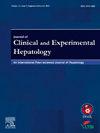Clinical Practice Guidelines: How Much to Trust and Follow?
IF 3.2
Q2 GASTROENTEROLOGY & HEPATOLOGY
Journal of Clinical and Experimental Hepatology
Pub Date : 2025-09-13
DOI:10.1016/j.jceh.2025.103185
引用次数: 0
Abstract
Clinical practice guidelines (CPGs) are aimed at guiding clinicians in making sound decisions and thus help optimize patient care. However, their development is a complex process, compromise with which can undermine the quality of the resultant CPG. The foremost risk lies in conflict of interest on part of those developing the CPG. In addition, formulation of a good-quality CPG requires balanced composition of the development panel, formulation of relevant clinical questions, use of rigorous systematic review methodology, well-defined processes for rating of evidence and grading of recommendations, complete transparency of processes, and full disclosure regarding funding and sponsorship.
This article reviews the steps in the formulation of a CPG, and various considerations that determine the quality of a CPG. It also discusses the common pitfalls in their development, and the issue of existence of multiple conflicting CPGs on the same topic, using guidelines from India on hepatocellular carcinoma published in this journal and elsewhere as an example.
临床实践指南:多少信任和遵循?
临床实践指南(CPGs)旨在指导临床医生做出合理的决策,从而帮助优化患者护理。然而,他们的发展是一个复杂的过程,妥协可能会破坏最终CPG的质量。最重要的风险在于CPG的开发人员之间的利益冲突。此外,制定高质量的CPG需要开发小组的平衡组成,制定相关临床问题,使用严格的系统审查方法,明确定义证据评级和建议分级的流程,流程完全透明,并充分披露有关资金和赞助的信息。本文回顾了制定CPG的步骤,以及决定CPG质量的各种考虑因素。它还讨论了它们发展中的常见缺陷,以及在同一主题上存在多个相互冲突的cpg的问题,并以本杂志和其他地方发表的印度肝细胞癌指南为例。
本文章由计算机程序翻译,如有差异,请以英文原文为准。
求助全文
约1分钟内获得全文
求助全文
来源期刊

Journal of Clinical and Experimental Hepatology
GASTROENTEROLOGY & HEPATOLOGY-
CiteScore
4.90
自引率
16.70%
发文量
537
审稿时长
64 days
 求助内容:
求助内容: 应助结果提醒方式:
应助结果提醒方式:


